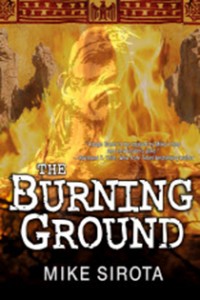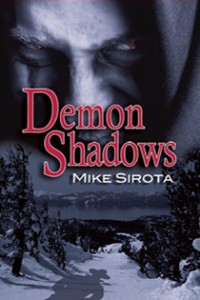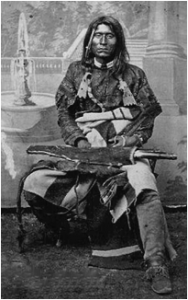I wrote this post in 2012, a couple of years before publishing my historical novel about this tribe, Stone Woman: Winema and the Modocs.
 Of my four horror novels, three are steeped in Native American culture and mythology. More specifically, the Native Americans that I chose to write about are among California’s indigenous people. Why? First, there has been a book or two (or a gazillion) written about the Sioux, the Apache, the Comanche, and other familiar tribes. Ditto with movies made about the “Old West.” So why go over well-trodden ground?
Of my four horror novels, three are steeped in Native American culture and mythology. More specifically, the Native Americans that I chose to write about are among California’s indigenous people. Why? First, there has been a book or two (or a gazillion) written about the Sioux, the Apache, the Comanche, and other familiar tribes. Ditto with movies made about the “Old West.” So why go over well-trodden ground?
But more important, California’s indigenous people have their own rich heritage, a great deal of which has been lost over the past century and a half due to the encroachment of white America onto their sacred lands. In my novel, The Burning Ground, I chose the Maidu people of the Sierra Nevada foothills because of their unique burial customs. For Demon Shadows, the fascinating mythology of the Washo people around Lake Tahoe just begged to be explored.
 Then, there is The Modoc Well. I wrote the book in the ’80s, and Bantam Books first published it as The Well in the early ’90s. The semi-nomadic Modoc people once called the border region of northern California/southern Oregon their home. What happened to this small tribe was a microcosm of the similar fate of so many tribes from coast to coast. It was also a travesty.
Then, there is The Modoc Well. I wrote the book in the ’80s, and Bantam Books first published it as The Well in the early ’90s. The semi-nomadic Modoc people once called the border region of northern California/southern Oregon their home. What happened to this small tribe was a microcosm of the similar fate of so many tribes from coast to coast. It was also a travesty.
But the Modocs did not go down easily, and it was the remarkable courage of these people that drew me to their story. They made their last stand against the U.S. Army in the rugged lava beds, now the Lava Beds National Monument. In The Modoc Well my main character, Greg Lowell, takes his wife and two teens to visit the monument. Here is what he tells them:
“When we were talking about the Modoc Indians, you asked me what became of them. Well, the incident that occurred in the lava beds pretty much marked their end.
“I mentioned that the Modocs fought to save their land. The Fire Valley Massacre was just one of many confrontations. But for a time thereafter the Modocs coexisted with the whites, adopted their ways. Things were comparatively quiet up here during the Civil War years.
 “Then, the same old story. White man wanted all the land, wanted the Indians out of his sight. In 1864, the Modocs were moved to the Klamath Indian reservation in Oregon. The Modocs were actually kin to the Klamaths, but generations removed, and at that point not too fond of each other. Tensions grew, until one group of Modocs under Captain Jack left the reservation and returned to their ancestral land.”
“Then, the same old story. White man wanted all the land, wanted the Indians out of his sight. In 1864, the Modocs were moved to the Klamath Indian reservation in Oregon. The Modocs were actually kin to the Klamaths, but generations removed, and at that point not too fond of each other. Tensions grew, until one group of Modocs under Captain Jack left the reservation and returned to their ancestral land.”
“Captain Jack?” Janet was curious.
“A hell-raiser who became their chief. His real name was Kent-push, or something like that. The anglicized Modoc names were colorful: Scarfaced Charley, Shacknasty Jim, Curly-headed Doctor. Anyway, Captain Jack led them home. They were brought back once, but jumped again. The second time, they were damned defiant over their right to exist. They even insisted on money from the settlers for living on their land. Things got pretty ugly again.

Captain Jack, Modoc chief
“Late in 1872, the army tried to arrest Jack and send the Modocs back to the reservation. Talk turned to violence. The soldiers burned their village, but the Indians managed to escape and headed for the lava beds. This was the start of the Modoc Indian War.
“The Modocs established themselves in an area of the lava beds called the Stronghold. You’ll know why when you see it. From there, with fifty or so warriors, they held off anywhere from three hundred to a thousand soldiers for six months, killing more than their share. And they hardly lost any of their own. It was an unbelievable, courageous stand, and it received world attention, the best there could be at that time. There was even a surge of outrage and sympathy for their cause, until Captain Jack was pressured by his people into an ambush of some government representatives during a peace talk.
“Finally, the Modocs had to leave the Stronghold for water. The troops eventually rounded them up, though not before sustaining many more casualties. Captain Jack and his lieutenants were tried for the murder of an army general and a minister at the peace talk, then hung. The remaining Modocs were sent to a reservation in Oklahoma. After the turn of the century they were allowed to return here if they wanted, strangers in their own land.”

Captain Jack’s Stronghold
They were all silent for a minute, then Janet shook her head. “How could anyone do that? Man bursts on the scene, takes the land of another man who’s been there for God knows how long, tells him to live where he wants him to live, do what he wants him to do. It’s not right!”
“But how often has it happened?” Greg said. “And not just to Native Americans. It’s an ugly part of our heritage.” He shrugged. “Worst part is, do we learn from it?”
Clearly, this was the “statement” chapter in the book. I believe that writers should educate as well as entertain. As for the story, the “hook” occurs in the brief prologue as Greg and his family, on vacation, drive to the small town of Bonner in northern California, where Greg was born. His family left their ancestral land when he was a baby and never spoke about their experiences afterward. Greg has never been back and is curious. So it seems odd, as they near the town, that he would say, “Almost home.”
Part One takes place in the 1850s, as settlers begin occupying Fire Valley in the land of the Modocs. Greg’s ancestors, the Padgett family, establish a ranch on acreage that includes a particular patch of ground carefully watched for centuries by the Modoc people. Something is buried below there, and through Rebecca Padgett that something is released when, during a drought, she divines water and a well is dug. What happens back then is quite nasty, but then, as the only surviving Padgett flees the area, the something lies dormant for a long time…
…until another Padgett descendant returns to Fire Valley.
To tell you more would be cheating you out of what I think you’ll find a fast-paced read. Suffice it to say, Modoc myth gave me the ingredients for a compelling story that takes place in a unique setting. But Modoc reality is something that should never be forgotten.
From April 15th through April 17th The Modoc Well will be available for Kindle download for a whopping .99¢. Enjoy!
